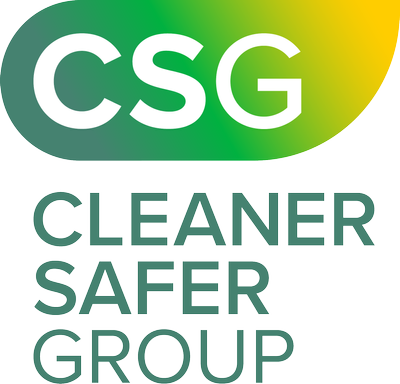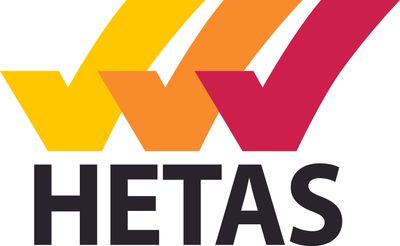“We must stay focused on working together to minimise emissions, continue research, and educate on responsible wood burning, for a cleaner, safer environment”
Published:
Read Time: 6 mins
“We must stay focused on working together to minimise emissions, continue research, and educate on responsible wood burning, for a cleaner, safer environment”
- Official government data shows the percentage contribution of PM2.5 emissions from domestic burning has fallen by 15% in the last five years, despite growing popularity of wood-burning stoves in the UK.
- The National Atmospheric Emissions Inventory (NAEI) and supporting documents show that high-quality fuel burnt on a modern stove only accounts for less than 0.3% of the UK’s total PM2.5.
- According to the NAEI, open fireplaces that burn wet wood, produce over eight times more emissions annually compared to modern Ecodesign stoves burning dry wood.
- Using the blanket term of ‘domestic combustion’ is diminishing the hard work and progress of the industry. Combining efficient stoves with other sources like open fires and unregulated practices such as bonfires, firepits, BBQs, puts unnecessary blame on households burning efficiently and often results in the misinterpretation of annual data.
- High-quality Ready to Burn fuel, used in an efficient, regularly maintained Cleaner Choice stove produces significantly less emissions when it burns.
Clarifying misinterpretation and misinformation
“There are a lot of conflicting messages and statistics around wood burning at home but there shouldn’t be. Government has not said it intends to ban domestic burning. Research and consultation have revealed that the consequences of attempting to ban burning are not currently acceptable to many vulnerable groups, with 15% (4.4 million) of households in Great Britain off grid. It is therefore important that we stay focused on working together to minimise emissions, continue research into best practise, and educate stove users to burn responsibly, for a cleaner, safer environment.
“According to official government data, the annual contribution of PM2.5 emissions from domestic burning has decreased by 15% in the past five years - despite the increasing popularity of wood-burning stoves in the UK. Defra figures show that it contributes to only 29% of the UK’s annual PM2.5 emissions in 2022, compared to 44% in 2018.
“Using the blanket term of ‘domestic combustion’ when reporting emissions data, is diminishing the hard work and progress of the industry. The inclusion of indoor and outdoor burning such as unregulated practices like bonfires, firepits, BBQs puts unnecessary blame on households burning efficiently and often results in the misinterpretation of annual data. For example, the incorrect assumption that Defra’s 2022 figure of 29% PM2.5 emissions from domestic combustion applies to all wood-burning stove users.
“The solid fuel and biomass industry works hard to innovate. Organisations like HETAS and Woodsure, alongside many manufacturers and our registered retailers and trade professionals, continue to educate stove users on responsible ownership, maintenance, and the use of higher-quality, Ready to Burn fuels to reduce emissions. Product certification schemes such as HETAS’ Cleaner Choice also independently verify appliances to have an emissions performance limit of 50% or less than required by the Clean Air Act and other regulations.
“In fact, The National Atmospheric Emissions Inventory (NAEI) and supporting documents show that high-quality fuel burnt on a modern stove only accounts for less than 0.3% of the UK’s total PM2.5. The NAEI documents suggest that the majority of domestic combustion emissions are caused by poor burning habits, where users are burning unseasoned wood on old, inefficient appliances.
Open fireplaces and ‘home burning’
“Open fireplaces that burn wet wood, produce over eight times more emissions annually compared to modern Ecodesign stoves burning dry wood, as confirmed by NAEI’s annual figures, stemming from government departments and key data providers. Open fireplaces - possibly the worst polluters of household burning - produce around 1.441 kt/y of PM2.5 versus modern Ecodesign stoves, which produce around 0.174 kt/y of PM2.5. Comparing the best practice recorded under this methodology to the worst practice, the efficiency of a modern wood burner is evident.
“On average, 40% of appliances across the UK are open fires. In London, 68% of appliances are open fires – the highest in the UK. Upgrading London’s open fires to modern, more environmentally friendly stoves will improve the city’s air quality and help its exposure rates get closer to the rest of the UK, which have fallen by 54% since 2003.
Diesel trucks
“The official figures published for 2022 show that road transport emissions make up over 20k tonnes of PM. The same report shows that PM emissions from domestic burning make up approximately 19k tonnes.
“It is, however, worth noting that comparing diesel trucks with stoves is not straightforward and is sometimes not a representative comparison. It’s important to look at the same criteria when validating such claims. Official government statistics state that ‘most PM emissions from road transport derive from non-exhaust emissions’. As such, when considering reports and statistics, it is key to understand whether the comparisons made only take into account exhaust emissions, or if they account for total transport PM emissions. More informed studies and accredited government statistics recognise that particulates from vehicles primarily come from tyre wear, brake dust, and road wear. Not just the exhaust emissions.
“Furthermore, stoves are primarily used for parts of the year, whereas trucks are on our roads all year round; diesel has a wide range of pollutants that are emitted at a low level, while stoves must, according to government regulations and standards, emit fumes above the property or at high level; pollutants from trucks are emitted far and wide, while stoves are used mostly in rural areas. When stoves are installed in cities, smoke control areas and stricter rules are in place to reduce particulates and better regulate burning practices through enforcement.
“This demonstrates how misrepresentative these comparisons can be.
“We should all be contributing to a reduction in the emission of particulate matter and other pollutants and discovering detailed information about the sources of pollutants will help us tackle the most urgent first.
Government and industry working together
“Government and industry have been working together for a long time to reduce emissions and limit the worst burning practices. Legislation exists to combat the poorest, least efficient, most polluting ways of heating your home with a solid fuel appliance – these include using Ready to Burn certified dry firewood for a cleaner, more efficient burn, a ban on traditional house coal in England and the introduction and expansion of Smoke Control Areas (SCAs) where Cleaner Choice appliances are permitted to be installed, to limit which fuels and appliances can be installed and used by homeowners. Local authorities also have legislative powers in SCAs to fine those burning irresponsibly.
“When combined with expert-led user education, this legislation prevents the worst, most polluting burning practices. Every aspect of a wood burning stove – from manufacturing and installation to fuelling and maintenance – is held under scrutiny to ensure regulations, legislation, and best practices are followed for a cleaner, safer environment.”
Ends
Editors notes
For further clarity on FAQs relating to Clean Air Night please read HETAS' ‘Fact Sheet’ here, which can be quoted from and attributed to Bruce Allen, CEO of Cleaner Safer Group.
For a headshot of Bruce Allen, CEO, and a copy of this statement, please visit the HETAS newsroom here.
Or for further questions, contact HETAS PR team – Verity Blake/David Ferguson/Olivia Furniss on Hetas@headonpr.co.uk / 01242 335 246




